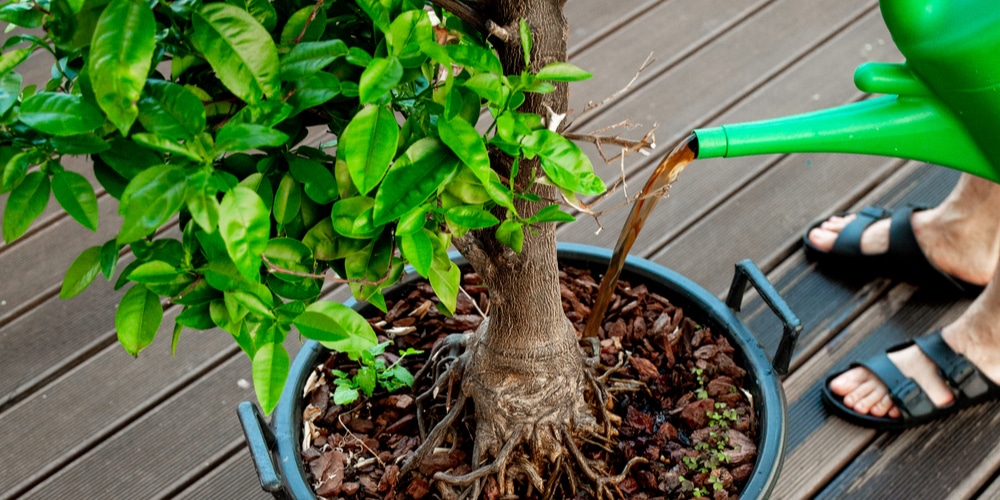Ever wanted a never-ending supply of fresh lemons right from your windowsill?
Believe it or not, growing lemons from seeds isn’t just for gardening pros, it’s a fun, easy, and surprisingly magical process anyone can do.
Stick around and I’ll walk you through my personal “lemon magic” method.
You’ll learn everything you need to know to go from supermarket seed to lush, fruiting lemon tree, right at home.
Why Grow Lemons From Seed, Anyway?

Growing lemons from seeds is one of those garden projects that gives back in spades.
- It’s cheap! One lemon = dozens of seeds = dozens of chances to succeed.
- You can grow them year-round indoors, no matter where you live.
- It’s a fun, hands-on activity for kids (and adults).
- Watching a tree sprout from a simple seed is seriously rewarding.
In my own kitchen, I’ve grown dozens of citrus trees from nothing but store-bought lemons.
The hardest part? Waiting for that first tiny sprout to poke through!
Supplies You’ll Need

Before we get started, gather these basics:
- A ripe lemon (preferably organic for best germination)
- Small pots or seed-starting trays
- Good quality potting mix (something light and fast-draining)
- Plastic wrap or a clear plastic bag
- A spray bottle for misting
- Paper towels
Tip: Organic lemons are less likely to have seeds treated with growth inhibitors.
Step 1: Harvest & Prep Your Seeds

- Slice open your lemon and remove several seeds.
- Rinse the seeds gently under lukewarm water. Remove all pulp.
- Peel off the slimy outer seed coat using your fingernail (optional, but it helps speed up germination).
- Place the clean seeds on a damp paper towel.
Tip: Peeling the seed coat takes patience, don’t rush it! If you leave the coat on, just expect a slightly slower start.
Step 2: Pre-Germinate for a Quick Start

Wrap your seeds in a moist (not soaking wet) paper towel. Slip the towel and seeds into a ziplock bag or sandwich bag.
Label with the date and keep the bag in a warm, bright spot—like on top of your fridge.
- Check daily to make sure the towel stays moist.
- Most seeds will show tiny roots in 1–2 weeks!
From my own experiments:
Seeds with a split or cracked tip are usually about to sprout. Plant those ASAP!
Step 3: Potting Up Your Lemon Babies

Once your seeds have sprouted, gently move them to a small pot filled with damp, airy potting mix.
- Plant the seed about ½ inch deep, root down.
- Mist the soil lightly. Cover with plastic wrap to keep humidity high.
- Place the pot in a bright, warm spot (windowsill or under a grow light).
Remove the plastic wrap once you see green shoots!
Don’t crowd your seeds.
If you have several, use one pot per sprouted seed or space them a few inches apart in a tray.
Step 4: Caring for Your Lemon Seedlings

Caring for lemon seedlings isn’t hard, but it does take consistency.
- Light: 6–8 hours of sun or a grow light is ideal.
- Water: Keep the soil moist, but not soggy. Water when the top inch feels dry.
- Humidity: Young lemon trees love humidity. Mist occasionally or keep a tray of water nearby.
- Fertilizer: Wait until your seedlings have at least two sets of true leaves. Then feed with a weak liquid fertilizer every 2–3 weeks.
When my first seedling finally sprouted real leaves, I felt like I’d won the lottery. That’s the magic of growing from seed!
Step 5: Transplanting and Long-Term Lemon Tree Care
Once your lemon seedlings are several inches tall, it’s time to move them to a bigger pot.
- Choose a pot with drainage holes, at least 8–10 inches wide.
- Use a citrus-specific potting mix or amend regular soil with extra perlite and compost.
- Gently loosen the roots and replant.
Ongoing Care:
- Light: More sun = more growth. South-facing windows are best.
- Water: Lemons hate soggy feet. Allow the top inch to dry between waterings.
- Humidity: Indoor air can be dry, especially in winter. Mist, or use a humidity tray.
- Fertilizer: Use a slow-release citrus fertilizer or balanced houseplant food, following the label.
Firsthand tip:
I once forgot to water my lemon tree for nearly a week during a summer heatwave. The leaves drooped, but a deep watering brought it right back. Lemons are tougher than they look!
Step 6: Getting Your Lemon Tree to Fruit

Here’s the truth:
Lemon trees grown from seed can take 3–7 years to produce fruit (sometimes longer), and may not be identical to the parent lemon.
But it’s worth it for the experience—and the bragging rights!
- Make sure your tree gets plenty of light year-round.
- Prune for shape and to encourage bushiness.
- When possible, move the pot outdoors in warm weather (above 55°F) for the sun and pollinators.
Even if your tree never fruits, it’ll reward you with glossy leaves, fragrant blossoms, and a mini Mediterranean vibe.
Troubleshooting: Common Lemon Seedling Problems

Yellow Leaves
- Cause: Overwatering, poor drainage, or lack of nutrients.
- Solution: Allow soil to dry, use well-draining mix, start a light fertilizer routine.
Droopy Seedlings
- Cause: Not enough light or root rot.
- Solution: Move to a sunnier spot, check for soggy roots.
No Germination
- Cause: Old seeds, cold temperatures, or dry paper towel.
- Solution: Use fresh, organic seeds; keep the towel moist and bag in a warm spot.
Benefits of Growing Lemons Indoors

- Year-round greenery: Lemon trees look great even without fruit.
- Air-purifying: Citrus leaves can help clean indoor air.
- Fragrance: Blossoms smell amazing—like sunshine in a flower.
If you have kids, this is a perfect way to teach patience, science, and the wonder of growing your own food.
Creative Ways to Use Your Homegrown Lemons
Once you finally harvest those lemons (trust me, it’s worth the wait!), here’s what you can do:
- Fresh lemonade or cocktails
- Zest for baking and marinades
- Homemade lemon cleaning spray
- Garnish for drinks, salads, and desserts
- Lemon-infused olive oil
And if you’re like me, you’ll save a few seeds to start the whole process again!
Frequently Asked Questions (BONUS!)
1. Can you really grow lemons from store-bought lemons?
Yes! As long as the lemon isn’t seedless or treated with chemicals, you can sprout and grow your own lemon tree.
2. How long does it take for a lemon tree grown from seed to fruit?
Anywhere from 3 to 7 years (sometimes more), and there’s no guarantee your lemons will taste exactly like the original fruit.
3. Do I need to graft my lemon tree?
No, but grafted trees fruit faster and more reliably. Homegrown seed trees are fun and beautiful, even if they take longer.
4. Can I keep a lemon tree small for indoors?
Absolutely! Prune regularly and keep in a medium pot. Many people grow lemons as compact houseplants.
5. Why are my lemon seedlings turning yellow?
This usually means overwatering or poor soil drainage. Cut back on water and make sure your pot has good drainage holes.
Final Thoughts
Growing lemons from seeds is easy, inexpensive, and incredibly satisfying.
You don’t need a green thumb—just a little patience, sunlight, and the willingness to try something new.
If you’ve ever wanted to add a little magic to your kitchen or windowsill, this is your sign.
Give it a try, and you’ll soon be enjoying the sweet rewards of your own lemon magic!
If you want fruit sooner, try buying a young, grafted lemon tree from a nursery, but keep growing those seedlings for fun!
Ready to get started? Go slice a lemon and let the magic begin!